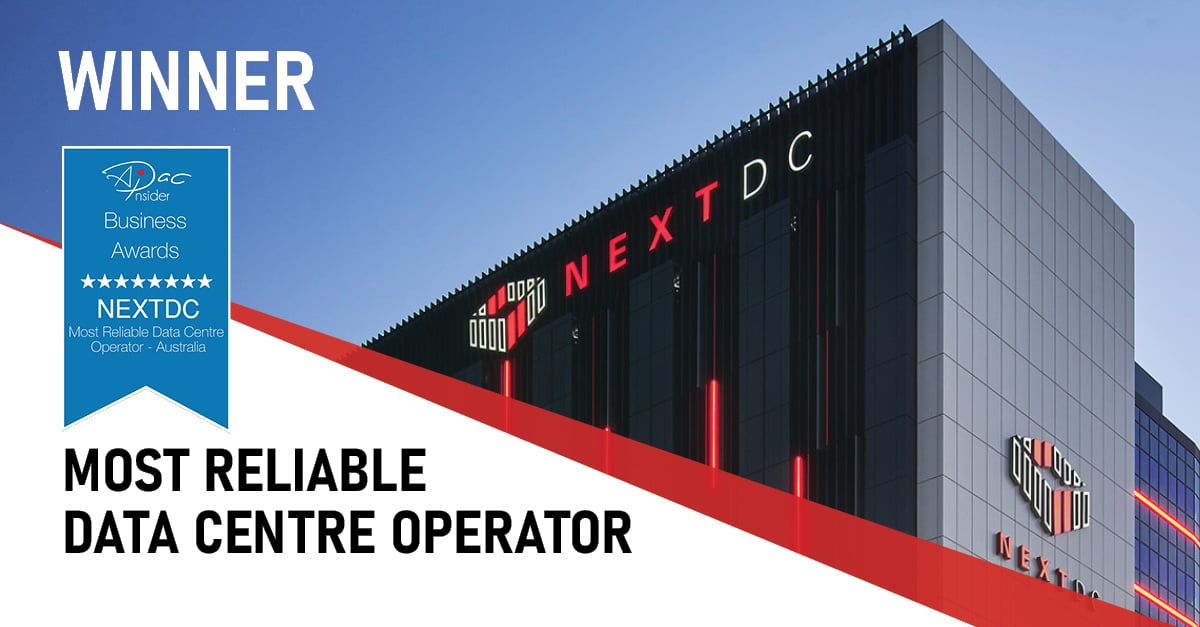By Claire Sangster – Head of WA Sales, NEXTDC
Successful hybrid IT solutions support business transformation, reduce risk and deliver future readiness to business. As businesses lean on technology to enable growth and innovation, the evolution of digital transformation accelerates. Modern hybrid IT seeks to support this digital transformation, providing scalable, connected IT solutions located both in physical premises and in the cloud.
Based on accelerated use cases, we’ve witnessed some of the strongest and most successful applications of hybrid IT technology occur in the resources sector. The resources sector is showcasing a desire to look at ways to leverage technology and maximise every cent of investment, to gain a competitive advantage and overcome challenges they’re faced with.
The question for many industries now is how to accelerate to the next level of adoption and transformation and make these technologies ubiquitous across the economy.
5 Imperatives for investing in your hybrid IT future
In Western Australia, the resources sector is achieving outstanding returns on their investments in hybrid IT, cloud, interconnection, automation, and big data analysis.
Successful resources organisations are leaning into their infrastructure platforms to achieve scalable growth, increased efficiency and risk mitigation.
The key learnings from these early adopters have informed the following 5 critical imperatives for investing in your hybrid IT future:
1. Leveraging technology to stabilise business processes
Downtime costs money. Service interruptions affect revenue, customer experience and brand reputation. For businesses to adapt and accelerate, targeting 100% availability of those functions and the core applications that underpin business is a new imperative.
Modern businesses are data driven and business functions and processes are underpinned by data. Therefore, the underlying infrastructure needed to capture, mobilise and effectively leverage it is critical to organisational prosperity. Downtime in any industry is crippling, however the impact of systems unavailability is increased tenfold in the resources sector through lost production of high value commodities or safety implications. Resources companies pay an enormous amount of attention to the resilience of their infrastructure.
Through rigorous redundancy planning, replicated geo-diverse networks, proactive mission critical operations centres and edge deployments, the sector has reduced this risk and stabilised business processes.
2. Investing in hybrid IT solutions to keep people safe
No business can accelerate without managing the health, safety and wellbeing of its people. Any business that has people working with machinery, plant and equipment or which involves employees travelling long distances to remote locations must address safety obligations.
Resources companies place the safety of people at the top of priorities and their IT investments mirror that.
Infrastructure stability and strategic partnering are key to achieving improved safety outcomes. Whether integrating PPE with locational devices and telemetry, using real time data capture for hazardous workplace tools and equipment or using virtual reality to perform critical on-site tasks remotely, IT innovation continues to advance safety outcomes in so many ways.
3. IT solutions to reduce costs and accelerate time to market
Digital transformation continues to contribute significantly to cost reductions across the economy through automation and data analysis. Everything from resource planning, asset management and accounting benefits from more efficient processes and supports strategic decision making around trends and opportunities.
As data volumes surge, it’s critical you’re thinking about how your IT infrastructure will adapt so you accelerate the value you derive from it.
Procuring, deploying, and configuring new hardware is capital intensive, complex and time-consuming, all of which is distracting from the immediate priority and slows down delivery of the outcomes.
Resources companies are addressing this by evolving new capabilities to provision scalable pay-as-you-go digital native environments which allows them to fast-track critical projects and reduce time to market for new initiatives and sites.
4. Supporting business productivity with IT infrastructure
Resources companies leverage both information and operational technologies to achieve 24x7 production schedules. They collect large volumes of data and use it proactively to minimise downtime. It’s their IT infrastructure that enables the low latency real time data analysis from the core to the edges with virtual machines leveraging AI over massive datasets to influence and activate strategic operational improvements.
Accessibility to unlimited processing power for data analysis on a pay-as-you-go basis and integrating that with the infrastructure running core business systems opens a world of opportunity to bend and respond to known and unknown change and disruption.
It enables the reallocation of human and capital resources away from non-core competencies to the most critical business priorities.
When you need to do more with less and drive established priorities, you have to trust that your infrastructure will withstand the test when you need to bend, stretch and respond.
5. Sustainable business operations
Climate change is a reality and the resources sector is a significant contributor to carbon emissions. Therefore, as all industries do, they have a responsibility to lead the way in creating sustainable business practices.
Infrastructure requirements balloon as transformation accelerates, so too does the energy that powers it. Consequently, more sustainable IT operations are a necessity to help companies reduce carbon.
Resources companies work in sensitive and unique environments so the onus is on them to demonstrate they can maintain operations without impacting the environment. Customers, investors and regulators demand it.
Accounting for carbon is a difficult task and never more so than in your IT operations, but you have to start somewhere. Resources have tackled this by moving early to ensure their data centres target low energy efficiency ratings and offer carbon offsets.
Explore hybrid IT with NEXTDC
The sustained prosperity of the resources sector’s key players are aspirational goals for every business. Success is compounded by early digital adoption, commitment to innovation and continual improvement. It is a model the rest of us can and should emulate.
Reach out if guidance on strategic decisions about investments in Hybrid IT architecture will help advance your broader business objectives.
Explore NEXTDC Hybrid Cloud Connectivity
Reach out if guidance on strategic decisions about investments in Hybrid IT architecture will help advance your broader business objectives.
Successful hybrid IT solutions support business transformation, reduce risk and deliver future readiness to business. As businesses lean on technology to enable growth and innovation, the evolution of digital transformation accelerates.


